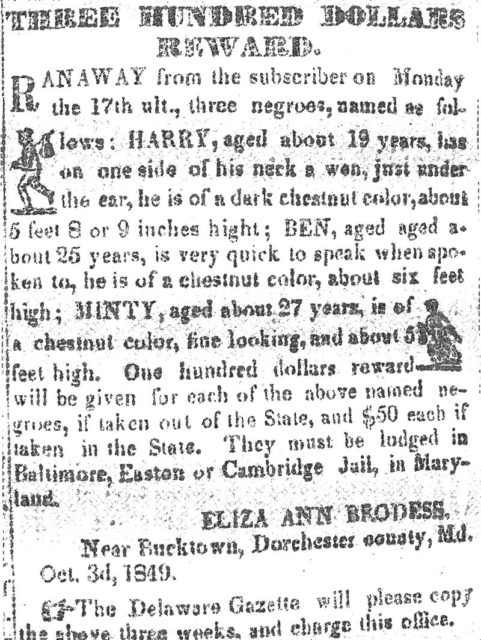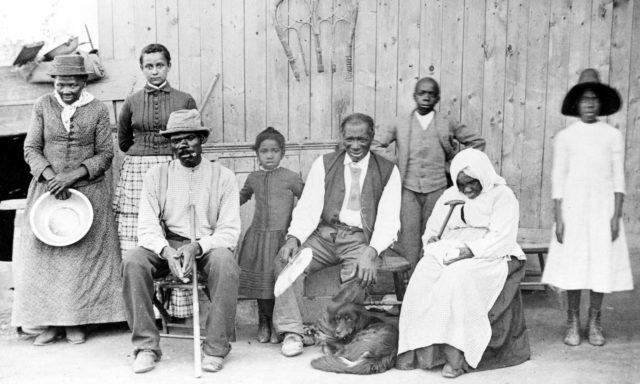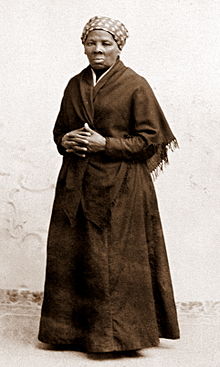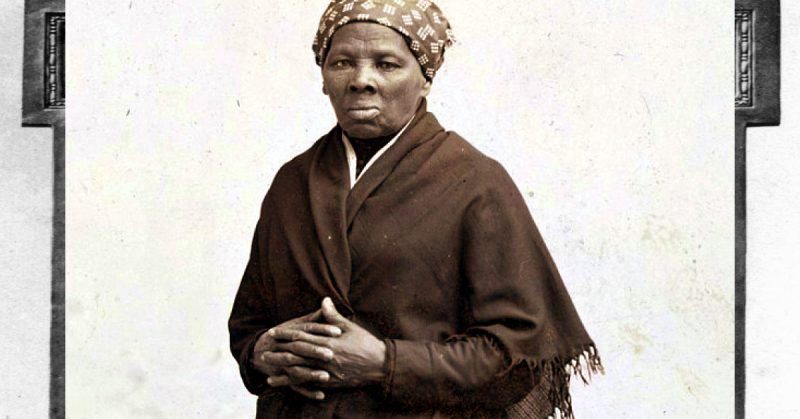Harriet Tubman was born Araminta Ross in Dorchester County, Maryland. She was also known by the nickname “Moses” due to her success in leading slaves to freedom during the Civil War. The exact year of her birth is unknown, but it was probably around 1822. She was born into slavery but escaped and used her own freedom to help other slaves.
She is remembered for her work during the Civil War where she worked as a scout, a nurse, and a spy as well as taking part many raids to free slaves from the Southern Plantations. Her most famous mission was the raid on Combahee Ferry. As well as helping to free as many as 700 slaves, it is notable as the first time an assault campaign was led by a woman. After the war, her activism continued, and she became involved in the woman’s suffragist movement.
The Underground Railway
Once she escaped from slavery, Harriet Tubman went to Philadelphia and began to work for the Union army believing that supporting the Unionist side was the only way to ensure the emancipation of slaves. She initially worked in the more traditional woman’s role as a cook and a nurse, but later she became active as a scout a spy and a soldier.

Returning to the south, she was able to help to rescue her friends and family from the plantations. Like many abolitionists, she became part of the “Underground Railway”. This was a secret network of activists who provided safe houses for escaped slaves and helped them to make their way across the border to safer territory.
The Underground Railway played a key role in the struggle against slavery especially after the passing of the 1850 fugitive slave act which required that any slaves who were captured should be returned to their masters. Tubman’s success in leading so many slaves to freedom earned her the nickname “Moses” from her fellow activists.
Once the slaves had escaped from the plantation, Harriet would lead them to the safety of British North America – where part of modern Canada is now. There she would help them find work before returning to bring out another group.
Tubman also played an important role in helping recruit volunteers for the raid on Harpers Ferry. This was an armed revolt of slaves organised and led by John Brown, although, in the end, she didn’t take part due to ill health.
The Raid at Combahee Ferry
One of Harriet’s most famous and successful missions was the raid at Combahee Ferry in South Carolina which took place in June 1863. On 1st June three ships had set off bringing 300 Union troops to the Combahee River. Unfortunately one ran aground not long after setting off so only two of the ships reached their destination in the early hours of June 3rd. Tubman was on board the John Adams with the soldiers of the 2nd South Carolina heading up the river to the Combahee Ferry. Thanks to Tubman’s previous scouting and spying activities she had valuable knowledge of the placement of Confederate mines in the river and was able to steer the boat safely.
As they travelled on, the boat picked up escaped slaves who were hiding along the riverbank. Many were initially afraid of the Union soldiers that thanks to reassurances from Tubman they were persuaded to come on board. The alarm was soon raised, but the operation met less resistance from the Confederate army than expected because this was the worst season for diseases, and many of the Confederate soldiers were laid low with smallpox, malaria and typhoid fever.
A few hours later reinforcements arrived. The pontoon bridge was destroyed, and the boat had to stop at the causeway. However, the Confederate troops were quickly defeated by gunfire from the John Adams and retreated. Tubman was free to lead her fellow Unionists and the slaves who had joined the boat, along the way to make their raid on the nearby plantations.
The John Adams blasted its whistles and, thanks to the underground network of spies and messengers, the slaves knew that it was a sign that the Union forces were there to rescue them. Hundreds of slaves stormed out of the plantations onto the waiting ships bringing with them supplies of rice and cotton, potatoes, corn, and livestock to help them on the next part of their journey. The plantation owners tried to stop the mass exodus with whips and handguns, but they stood no chance again so many single-minded slaves rushing to seize their freedom. Once the slaves had escaped, the plantation buildings were burnt down, and the ships then set off for Beaufort.
The End of the War

Tubman went on to work on a number of similar missions with the Massachusetts 54th Infantry, but for the last two years of the war, she returned to her earlier role as a nurse. She tended soldiers using her knowledge of locally grown herbs to treat wounds as well as diseases such as dysentery and smallpox. These maladies were rife, and, of course, made worse by the living conditions which were ideal for the spread of infectious diseases.
Despite working closely with so many who had smallpox, Harriet never contracted the disease herself. This is most likely to be due to some previous milder infection giving her immunity. But as this was not understood at the time, her resistance to the disease seemed like a devine blessing which only added to her reputation. When the Confederates surrendered in 1865, Harriet returned home to Auburn, New York where her parents now lived.
After the War

Despite her service, Tubman received little financial recompense for her work and lived the rest of her life in poverty. To make some extra money, she let out a room in her house. The man she took in a Civil War veteran now working as a bricklayer. Although he was 22 years younger than her, they were married a year later and together they adopted a daughter.
In later life, despite her poverty, she donated land which became the site of the Harriet Tubman Home, charitable home for impoverished older African-American citizens. It was there that Harriet Tubman died of pneumonia, 10th March 1913.
